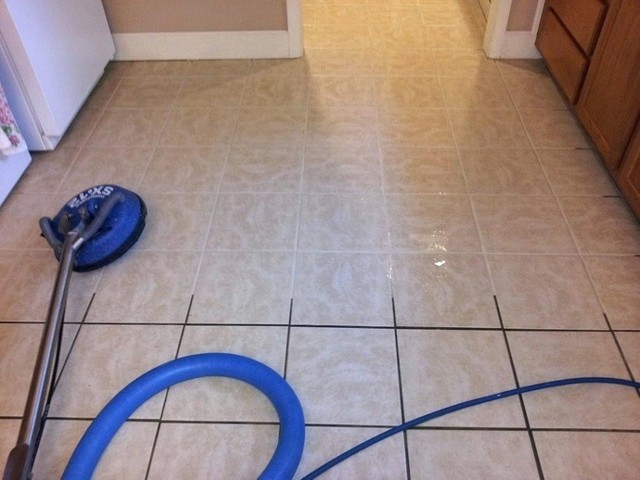Travertine floors are a stunning addition to any home, bringing an elegant and timeless aesthetic to living spaces. But as a homeowner, you also want to ensure your floors stay clean and well-maintained. This is where the practicality of a steam mop comes in. However, with the unique nature of travertine, a common question arises: can you use a steam mop on travertine floors?

Image: www.dontwasteyourmoney.com
The answer is a bit more complex than a simple yes or no. While steam mopping can be effective for cleaning, it’s crucial to approach it with caution when it comes to travertine. The porous nature of this natural stone makes it susceptible to damage from excessive heat or moisture. So, let’s delve deeper into understanding the potential benefits and risks of using a steam mop on travertine.
Understanding the Pros and Cons of Steam Mopping Travertine
Steam mopping offers several advantages, particularly in its ability to effectively kill bacteria and remove stubborn dirt and grime. The hot steam loosens dirt and grime, making it easier to clean. However, while this seems like a win-win for cleaning travertine, there are some downsides you need to consider.
Travertine, with its porous structure, absorbs moisture easily, making it susceptible to staining. Excessive heat from steam mopping can exacerbate this issue, creating watermarks and potentially causing damage to the sealant layer that protects the stone. Furthermore, steam mopping can cause the travertine to become too porous, leading to an increase in its susceptibility to stains and dirt.
Steam Mopping Travertine: A Detailed Guide
While steam mopping travertine isn’t entirely off-limits, it requires careful consideration and a mindful approach. If you decide to proceed, there are several important steps to take to minimize the risks:
1. Test in an Inconspicuous Area: Always start by testing the steam mop on a small, hidden area of your travertine floor. This allows you to observe any potential negative effects and ensure the steam mop won’t damage the stone.
2. Lower the Steam Temperature & Shorten Cleaning Time: Before using the machine on your travertine, adjust the steam temperature setting to its lowest level. This minimizes the potential for overheating and damaging the stone. Additionally, reduce the contact time with the steam mop to avoid excessive moisture exposure.
3. Use Distilled Water: Regular tap water contains minerals and impurities that can leave behind residue on your travertine floors. Using distilled water ensures cleaner results without causing hard-water stains.
4. Dry Immediately: After steaming, promptly dry the travertine floor using a soft cloth or a dry vacuum cleaner. Removing excess moisture as quickly as possible is essential to prevent water damage and staining.
5. Avoid Overdoing it: Remember that steam mopping should not become a regular part of your travertine floor cleaning routine. Instead, use it sparingly for deep cleaning purposes. For regular cleaning, stick to methods like dry mopping or using a damp mop with a mild cleaner specifically designed for natural stone.
Tips from the Experts and Alternative Cleaning Options
Expert advice and professional cleaners often recommend alternative cleaning methods for travertine, emphasizing the importance of protecting the natural stone’s beauty and integrity. Regular dry mopping and vacuuming can help maintain your travertine floors, while a damp mop with a pH-neutral cleaner diluted in water can remove dirt and grime effectively. Always refer to the manufacturer’s instructions for your specific travertine flooring and sealant.
It’s crucial to avoid harsh chemicals on travertine, as these can damage the surface and dull its natural luster. Many homeowners find success with mild soapy water for cleaning. Always test any new cleaning product on a small, hidden area of your floor before applying it to the entire surface.

Image: technofaq.org
Frequently Asked Questions
What is travertine, and why is it a popular flooring choice?
Travertine is a natural stone formed from deposits of calcium carbonate. Its unique characteristics include its warm, earthy tones, natural veining patterns, and durability. This makes it a popular choice for flooring, adding a touch of elegance and sophistication to homes and commercial spaces.
Can I use a steam mop on all types of stone floors?
No, not all stone floors are suitable for steam mopping. Always check the manufacturer’s recommendations for your specific flooring type. Natural stone like marble and travertine are often more susceptible to damage from excessive moisture and heat, so caution is necessary.
What are the best cleaning products for travertine floors?
For regular cleaning, mild soapy water or a pH-neutral cleaner specifically designed for natural stone is ideal. Avoid harsh chemicals and abrasive cleaners that can damage the surface and dull its natural brilliance.
How often should I clean my travertine floors?
Regular dry mopping or vacuuming can help maintain your travertine floors. A damp mop with a pH-neutral cleaner diluted in water can be used for more thorough cleaning. The frequency depends on foot traffic and household conditions. However, it’s generally recommended to clean travertine floors at least once a week.
Can You Use A Steam Mop On Travertine Floors
Conclusion
So, can you use a steam mop on travertine floors? While it is possible with careful precautions, experts generally recommend avoiding this cleaning method for travertine due to its inherent sensitivity to moisture and heat. Instead, rely on safer, more suitable options like dry mopping, vacuuming, and a damp mop with a pH-neutral cleaner. By following these tips and prioritizing the preservation of your travertine floors, you can ensure they remain a beautiful and durable feature for years to come.
Are you interested in learning more about taking care of your travertine floors? Share your thoughts and questions below! Let’s keep this conversation going!






